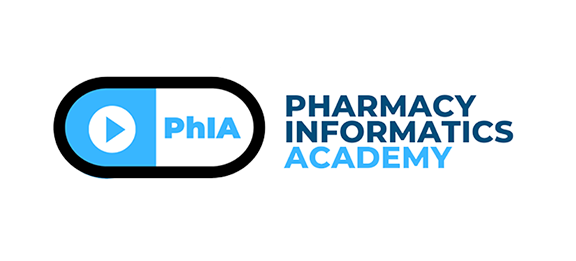Pharmacy Informatics Troubleshooting: 5 Tips to Identify the Root of the Problem
Pharmacy informatics technology is the backbone of modern healthcare, streamlining operations, enhancing patient care, and improving overall efficiency. However, like any complex system, it’s not immune to hiccups and challenges. When issues arise, it’s essential to identify the root of the problem for a quick and effective solution. The medication use process has pieces of technology that improve each phase, but with technology there is always the issue of potential problems.
In this blog, we’ll explore five crucial tips to help you pinpoint the core of most pharmacy informatics technology issue.
Understand the Workflow
Pharmacy informatics troubleshooting starts with the workflow. Identifying the root of any problem in pharmacy informatics requires a thorough understanding of your pharmacy’s, and to a larger extent your health system’s, workflow. This involves mapping out how information and processes flow through your system. By recognizing the critical points where technology interacts with your daily operations, you can gain insight into whether the problem arises from a flaw in a specific process or a technological glitch. Understanding the workflow is crucial because it allows you to pinpoint the exact areas where issues may arise. It helps determine whether the problem lies in the processes themselves, such as inefficient manual data entry or lack of standardized procedures, or if it is related to the technology being used, such as a software bug or compatibility issue.
Consult with End-Users
Engaging with pharmacists, pharmacy technicians, and other staff members who interact with the pharmacy informatics system is crucial for ensuring its effectiveness. In addition, due to the integrative nature of alerts, CPOE, and eMAR, front-line users can extend to physicians, nurses, physician assistants, nurse practitioners, and more. These front-line users possess valuable insights and firsthand experiences that can help identify any pain points or concerns related to the technology because they have day-to-day experiences and know the workflow the best, including points of improvements and points of contention. Regular discussions with end-users can provide a deep understanding of their needs and challenges. By actively listening to their feedback, you can gain invaluable information about recurring issues that may be affecting system functionality or user experience. By actively involving these staff members in the conversation, you can tap into their expertise and leverage their insights to improve the pharmacy informatics system. Their feedback can help inform system enhancements, usability improvements, and even the identification of potential technological issues.
Regularly Monitor Performance
Proactive monitoring of your system performance is crucial as it can significantly impact the efficiency and effectiveness of your operations. By establishing a set of key performance indicators (KPIs) and metrics related to your informatics technology, you can gain valuable insights into its performance and identify areas for improvement. Regularly tracking and analyzing these metrics allows you to spot trends or irregularities that may indicate underlying issues. For example, sudden dips in system performance or anomalies in transaction times could suggest potential bottlenecks or technical glitches, or unfiltered alerts firing at inappropriate times can delay care being given to the patients. By identifying these problems early on, you can take proactive measures to address them before they escalate into critical issues that disrupt your workflow or impact patient care.
Review System Logs and Documentation
Your pharmacy informatics system is a treasure trove of data, generating logs and comprehensive documentation detailing its activities. When doing any sort of pharmacy informatics troubleshooting, logs and documentation are important. These logs provide a historical record of system actions and can be a goldmine for understanding and resolving problems. They flag potential issues with error messages, warn of areas of concern, and document unusual activities, serving as vital clues for troubleshooting. Their historical context allows you to trace system evolution, spotlighting changes and occurrences that may have triggered or contributed to the issue at hand. In some EHR systems, you can review the video sessions of users at certain points in time, allowing you a targeted ability to discover the exact steps that caused an issue to occur. In essence, system logs function as a virtual time machine, enabling you to retrace the steps your informatics system has taken, offering critical context for understanding the root cause of a problem.
Collaborate with Tech Support and Vendors
When all else fails or when you’re dealing with complex technical issues, don’t hesitate to reach out to your technology support team or the vendors of your informatics system. These days, some health systems will have multiple pieces of technology integrated within their EHR system, such as automated dispensing cabinets, controlled substance monitoring, investigational medication workflows, IV workflow management systems, etc. Vendors have in-depth knowledge of their specific system’s architecture and can assist you in diagnosing and resolving issues. Collaborative problem-solving can often yield faster and more effective results, as tech support and vendors can provide insights, updates, or patches that address the root of the problem.
Conclusion
Pharmacy informatics technology plays a pivotal role in modern healthcare, but it’s not without its challenges. When issues arise, it’s essential to identify the root of the problem for a swift resolution. By understanding your workflow, consulting with end-users, monitoring performance, reviewing system logs, and collaborating with tech support and vendors, you’ll be better equipped to tackle technology-related issues head-on. Remember that in pharmacy informatics troubleshooting, identifying the root of the problem is the first step toward ensuring that your pharmacy informatics technology operates smoothly and effectively, delivering the best possible care to your patients.

